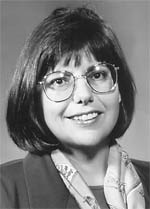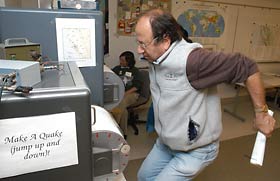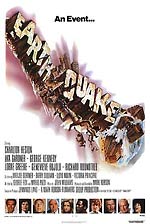UC Berkeley Web Feature
All shook up: Berkeley commemorates 1906 earthquake
 "In Berkeley we were not aware for several
hours of what was happening in [San Francisco].
While we ranked the earthquake as a severe one,
chiefly because of its extreme length (nearly two
minutes for the whole series of shakes), our own
fortunate escape from damage made us optimistic
about our neighbors also. … We saw the black
cloud of smoke hanging over S.F., and by noon we
had learned by messengers that a large district
of the city was on fire. Then came a few hours
of confused thinking of what we should do and then
the moment for action."
"In Berkeley we were not aware for several
hours of what was happening in [San Francisco].
While we ranked the earthquake as a severe one,
chiefly because of its extreme length (nearly two
minutes for the whole series of shakes), our own
fortunate escape from damage made us optimistic
about our neighbors also. … We saw the black
cloud of smoke hanging over S.F., and by noon we
had learned by messengers that a large district
of the city was on fire. Then came a few hours
of confused thinking of what we should do and then
the moment for action."
So wrote Washington Irving Stringham, professor of mathematics at UC Berkeley, who was drafted to "steer the university ship into strange waters" in the aftermath of the great 1906 San Francisco earthquake. (President Benjamin Ide Wheeler was in Texas when the quake struck.) The "moment of action" he described nine days after the quake quickly put Berkeley on the front lines of relief and recovery efforts — staff, faculty and every student on campus pitched in to resettle quake refugees in the East Bay and keep order in stricken San Francisco.
But in many ways, that was just the beginning. In the century since San Francisco was brought to its knees, UC Berkeley has emerged as a center of earthquake knowledge. Berkeley's engineers and architects are world leaders in designing and retrofitting buildings to withstand the earth's destructive jolts. In fact, a decade of seismic reinforcement work on Berkeley's own buildings has turned the campus into something of a practical laboratory for earthquake engineering techniques.
Berkeley's Seismological Laboratory is recognized as a pioneer in the scientific study of earthquakes, from monitoring and data collection to education and public outreach. Other campus experts have explored the economic, political and social ramifications of seismic and other catastrophes. And Berkeley's libraries and museums have assembled an unmatched collection of materials recounting the April 18, 1906, disaster and its aftermath.
So perhaps it's not surprising that as we count down the days to the 100th anniversary of the 1906 quake, the Berkeley campus is abuzz with programs, displays and performances drawing inspiration from that earth-shaking event. What follows is a rundown of the highlights.

The quake opened a sinkhole on Valencia St. in San Francisco, and pancaked the formerly four-story Valencia St. Hotel (left). (Courtesy Bancroft Library)
Exhibits
In a collection that provides the raw materials for
a host of other venues, the Bancroft Library has
assembled a comprehensive online archive on the 1906
San Francisco Earthquake and Fire.
Drawing on photographs, text documents, film and
audio clips, maps and other digitized material,
the collection amounts to a virtual museum of original
historical artifacts created at the time of the
tragedy. Its online "rooms" capture San
Francisco as it was in the months before the great
quake, surviving the temblor and the "firestorm
from hell" that it spawned, and reconstructing
the city in the years that followed. Highlights
include an interactive map showing the quake's
effects neighborhood by neighborhood, and a 360-degree
panoramic photo montage of the ruined city. The
exhibit draws on material from the Bancroft Library,
the California Historical Society, the California
State Library, Stanford University, the Huntington
Library and the Society of California Pioneers.
The Bernice Layne Brown Gallery in Doe Library is hosting a pair of exhibits on the quake. In the first collection, The History of a Disaster (on display through April 12), manuscripts, photographs, prints, books and ephemera from the Bancroft Library's collections provide a historical look, also highlighting the massive relief effort after the disaster and Berkeley's role. Then, starting April 21, the gallery will shift gears to the present with The Legacy of the Disaster, focusing on contemporary approaches to earthquake preparation and retrofitting and highlighting UC Berkeley's cutting-edge contributions to engineering and earthquake science. This second collection will be on display through August.
Conferences and lectures
The granddaddy of U.S. earthquakes is being marked
by the granddaddy of earthquake forums: the 100th
Anniversary Earthquake Conference,
jointly hosted by the Earthquake Engineering Research
Institute, the Seismological Society of America
and Disaster Resistant California (California’s
Office of Emergency Services). Titled "Managing
Risk in Earthquake Country," the April 17-21
conference at San Francisco's
Moscone Center will celebrate what has been accomplished
during the past century, showcasing best practices
and research results in science, engineering, and
emergency management. Berkeley's Seismological
Laboratory is co-hosting the SSA's annual meeting
as part of the conference, and Berkeley researchers
associated with the Earthquake Engineering Research
Center and the Pacific Earthquake Engineering Research
Center have been deeply involved in planning EERI's
part of the conference.
 Mary Comerio |
The final talk in the Earthquake Centennial Lecture Series happens March 15, when Mary Comerio, Berkeley architecture professor and disaster and recovery policy expert, discusses Designing for Disaster: U.C. Berkeley Thinks Ahead. This series, which began last fall, has examined both historical and social perspectives of the 1906 earthquake, and lessons learned over the past century in earth science and earthquake engineering and design. Lectures have been presented at both Berkeley and Stanford; the Berkeley talks are sponsored by the Berkeley Seismological Laboratory, the Chancellor and the Vice Chancellor for Research and the Bancroft Library.
The Berkeley Symposium on Real Estate, Catastrophic Risk, and Public Policy (March 23 at Alumni House; registration required) will look at the economic impact of natural disasters like hurricanes and earthquakes, including their effect on the insurance industry.
The theme of this year's Berkeley Conference on Housing and Urban Policy is "Risking House and Home: Managing Catastrophe in the American Metropolis." The March 24 conference (registration required) will include a keynote speech by Comerio.
Proving that the impact of the San Francisco quake stretched far beyond the Bay Area, the Institute of European Studies is holding a May 22 conference on The San Francisco Earthquake of 1906: Urban Reconstruction, Insurance, and Implications for the Future. The panel discussion will feature three German experts discussing the disaster, including its little-known impact on European insurance and reinsurance companies.
Cal Day
The Berkeley campus's open house on April 22 will
feature several events for the seismologically inclined:
 Cal Day visitors to the Seismo Lab can create their own earthquake, and watch it get recorded on a seismograph. (Peg Skorpinski photo) |
In the Berkeley Seismology Lab, visitors can learn about earthquakes through hands-on demonstrations and activities, plus displays on seismic hazards, earthquake monitoring, and recent and past events. Or come face to face with seismic safety on an Earthquake Retrofit Tour, learning how the SAFER Program has been strengthening and replacing campus buildings to resist the next big earthquake. These tours, sponsored by Capital Projects and the Vice Provost-Academic Planning and Facilities, include a pocket-sized tour book that will be available through Visitor Services after Cal Day.
Civil & Environmental Engineering will present videos and demonstrations on Bracing for the Next Earthquake, and professor Michael Riemer will give a talk on what liquefaction is and why it is so dangerous in an earthquake.
At the Lawrence Hall of Science, kids will become junior seismologists in Quakes and Shakes as they predict earthquake damage, brainstorm retrofit strategies, and take part in exciting interactive demonstrations of plate tectonics. (Seating is limited, so come early.)
Tapes of all the talks in the Earthquake Centennial Lecture Series will also be available for listening. And the Brown Gallery exhibit on earthquake preparation and retrofitting (see above) will be open on Cal Day. Details on all these programs will be available on the Cal Day website in early April.
Also on Saturday, April 22, the Berkeley Historical Society is planning a walking tour of three sites reflecting campus earthquake relief efforts, which included tent cities for refugees.
PerformancesOne of the most intriguing quake-inspired events is Ballet Mori, an improvisational dance performance conducted by the Earth and conceived by Berkeley professor and conceptual artist Ken Goldberg. In the April 4 performance, San Francisco Ballet Principal Dancer Muriel Maffre will respond to a musical composition created live, in real time, by the unpredictable fluctuations of the Earth's movement as measured by a UC Berkeley seismograph at the Hayward Fault and transmitted to San Francisco's Opera House via the Internet.
 |
Cal Performances traces its origins back to the May 17, 1906, performance of Racine's Phèdre at the Greek Theatre by the celebrated French stage star Sarah Bernhardt — a benefit for victims of the earthquake and fire a month earlier. It is celebrating the 100th anniversary in style with a Centennial Season Celebration and Gala on May 12 at Zellerbach Hall. The extravaganza includes performances by dancer Mark Morris and his group; contemporary musical ensemble Alarm Will Sound playing the work of John Adams, Peter Sellars, and June Jordan; the San Francisco Opera Orchestra and the combined vocal forces of the UC Alumni Chorus, University Chorus, and the Piedmont Children's Choirs; and Michael Tilson Thomas on piano with "Phantom of the Opera" star Lisa Vroman.
Exercises
The campus Office of Emergency Preparedness is planning an earthquake (of the simulated kind) for April 18, 2006, when it holds the latest in a series of disaster response drills. Although the Shockwave Centennial exercise does not have a public component, it will help campus leaders be better prepared to cope when reality supplants simulation.
Publications
Stephen Tobriner, a UC Berkeley professor of architectural history, has a new book coming out in April on "Bracing for Disaster: Earthquake-Resistant Architecture and Engineering in San Francisco, 1838-1933." The book, which looks at which San Francisco buildings were damaged by quakes and which survived, as well as who were the city's unsung heroes, is published by Heyday Books in collaboration with UC Berkeley's Bancroft Library Press.

